Europe Combined Heat and Power Market Size
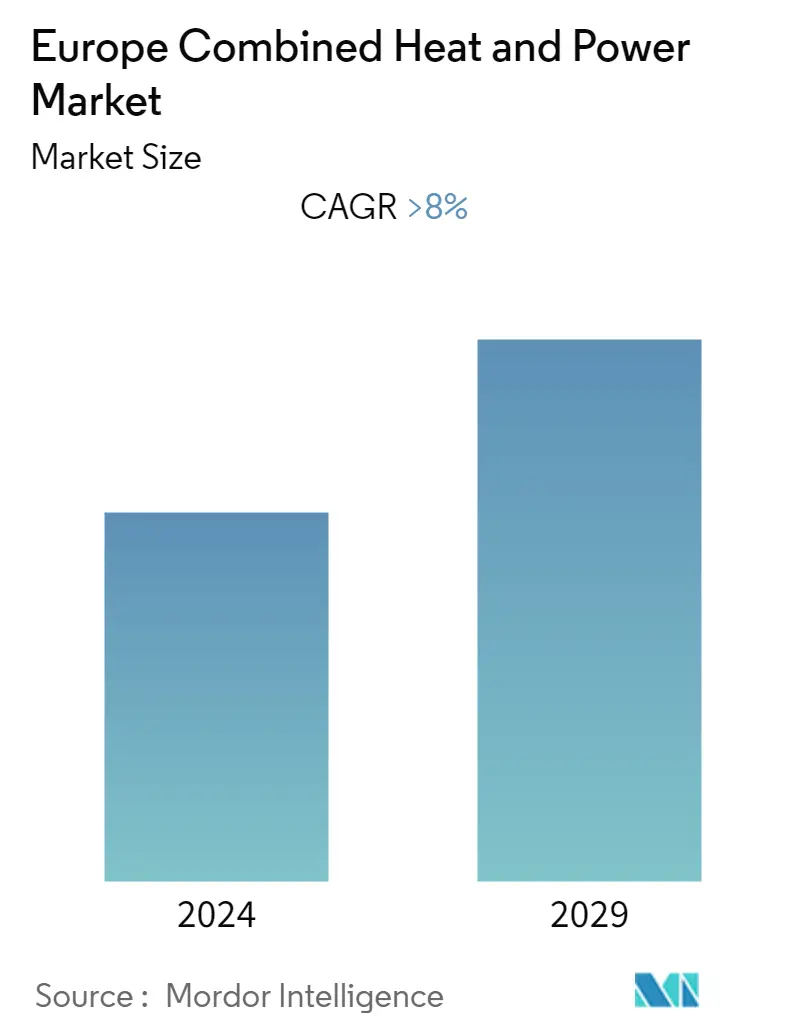
| Study Period | 2021 - 2029 |
| Base Year For Estimation | 2023 |
| Forecast Data Period | 2024 - 2029 |
| Historical Data Period | 2021 - 2022 |
| CAGR | 8.00 % |
| Market Concentration | Medium |
Major Players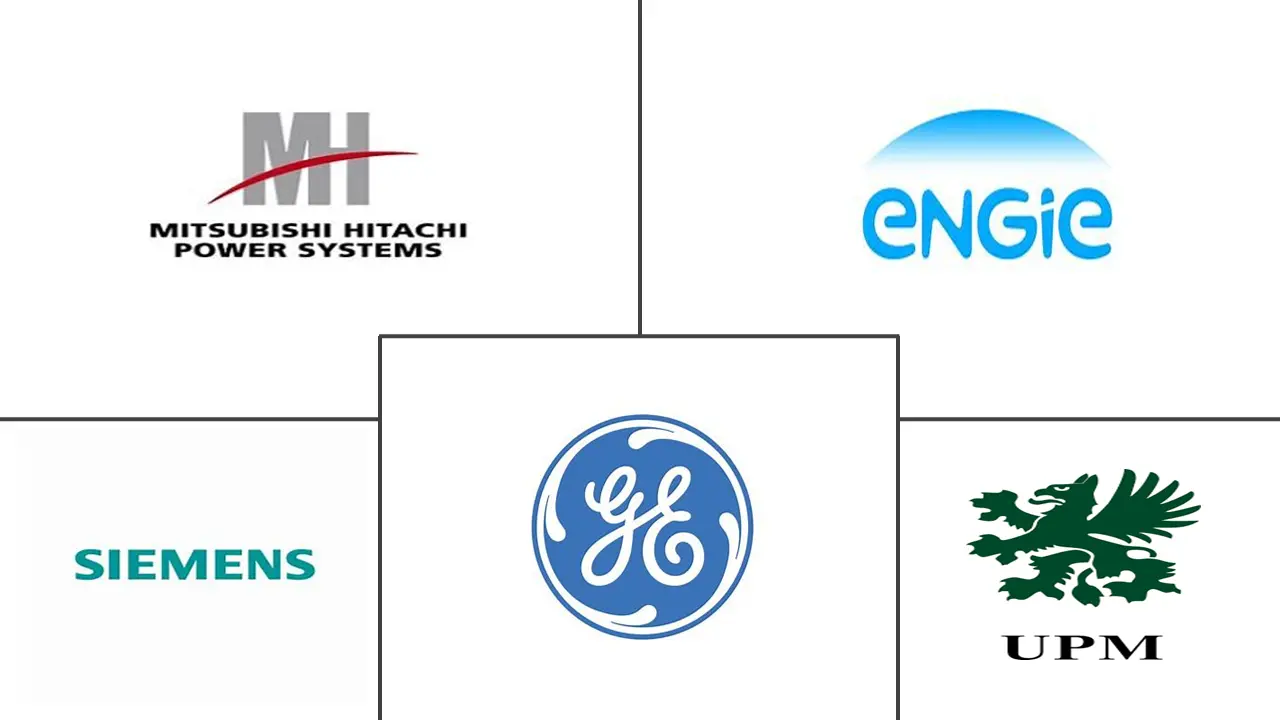
*Disclaimer: Major Players sorted in no particular order |
Europe Combined Heat and Power Market Analysis
Europe's combined heat and power market is expected to record a CAGR of over 8% during the forecast period.
The COVID-19 pandemic affected the market severely in 2020. Presently, the market has reached pre-pandemic levels.
- Over the medium term, the increasing energy demand, lowering energy costs, integration of renewable energy, and reducing carbon emissions are expected to drive the growth of the market studied.
- On the other hand, grid interconnection and significant initial capital investment are expected to hamper the growth of Europe's combined heat and power market during the forecast period.
- Nevertheless, increasing investment in the development of small-sized manufacturing units in the region will likely create lucrative growth opportunities for Europe's combined heat and power market during the forecast period.
- Germany dominates the market and is likely to witness the highest CAGR during the forecast period. This growth is attributed to the increasing investments and supportive government policies in the country.
Europe Combined Heat and Power Market Trends
This section covers the major market trends shaping the Europe Combined Heat & Power Market according to our research experts:
Biomass-based CHP to Witness Significant Growth in the Market
- Over the past few years, the biomass industry has grown significantly. Biomass combustion is a carbon-free process, as the resulting CO2 is previously captured by the plants being combusted. Biomass combined heat and power can be a beneficial technology for sites with a constant demand for heat and electricity.
- Europe's bioenergy production amounted to 41,846 MW in 2021. However, figures increased by 376 MW of bioenergy between 2020 and 2021, peaking at 41,846 MW of bioenergy in 2021.
- Small- and medium-sized CHP plants are usually sourced with locally available biomass. Large CHP plants and coal/biomass co-firing power plants require biomass sourced from a vast region or imported wood and forestry residues.
- Cogeneration, or combined heat and power, currently provides 11% of Europe's electricity and 15% of its heat, contributing up to 21% of the EU's CO2 reduction target and 15% of the EU's energy efficiency target.
- By 2030, cogeneration will likely provide 20% of electricity and 25% of heat in Europe, contributing up to 23% of the EU's CO2 reduction target and 18% of the EU's energy efficiency target. By 2050, the sector is likely to double the cogeneration capacity in the EU energy mix by ensuring that cogeneration is prioritized for all thermally generated electricity and heat, thus avoiding wasting valuable energy.
- The contribution of CHP to the energy mix varies significantly among European countries, from less than 5% in Malta, Cyprus, and Greece, to more than 30% in Denmark, Finland, Latvia, Lithuania, and Slovakia. Overall, at the European level, cogeneration has remained stable during the past few years.
- Europe's CHP industry is in industrial applications, providing power and steam to sectors such as pulp and paper, aluminum, chemicals, ceramics, glass, textiles, food and drink, and steel manufacturers.
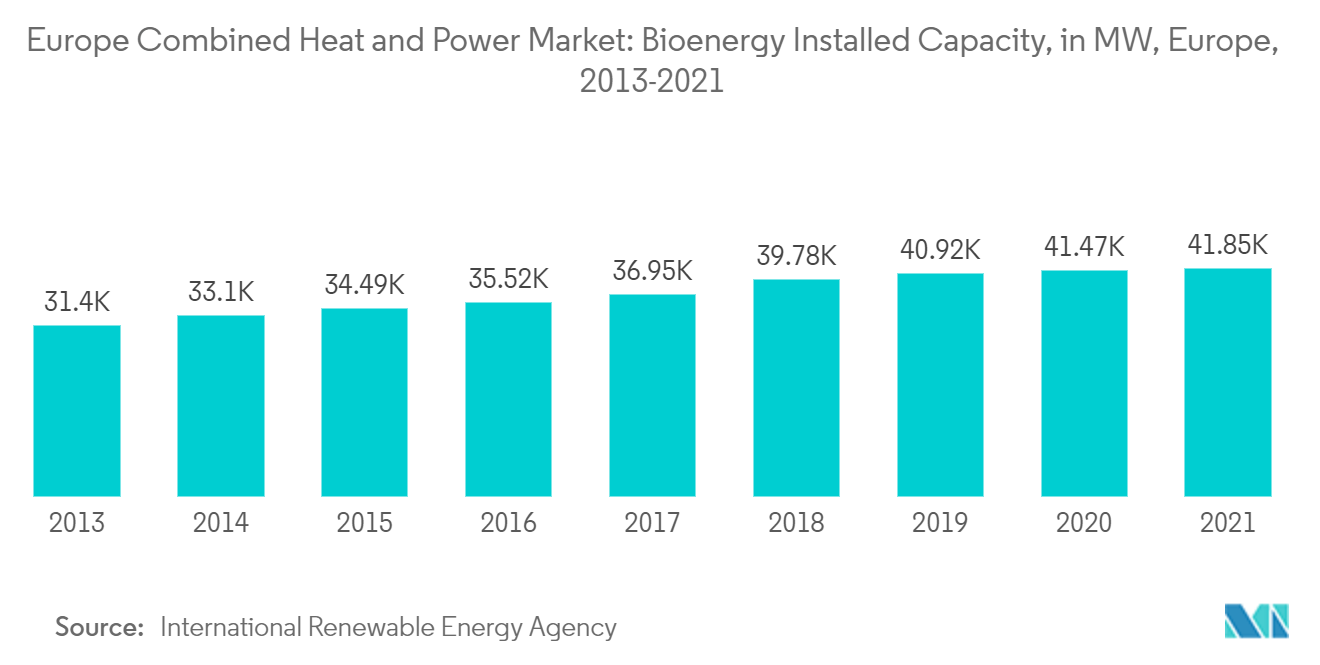
Germany to Dominate the Market
- Germany, Europe's largest economy, has set a clear ambition for CHP with a dedicated law and a target of 120 TWh by 2025. The country has experienced real CHP growth. It derives 16% of its electricity from cogeneration, well above the European average of 11%.
- Germany generated 584.5 terawatt hours of electricity in 2021, an increase of nearly 2% from the previous year. Nevertheless, in 2017, these figures decreased by 1.9 terawatt hours and peaked at over 651 terawatt hours.
- Several high-profile CHP projects have come up throughout Europe, are under construction, or have been approved. One of the largest projects is the municipal cogeneration project underway in the port city of Kiel, about 90 km north of Hamburg, Germany.
- Germany upgraded its support scheme, introducing guaranteed premiums that spurred investments in large district heating networks. Key industries in refining and chemicals followed smaller retail businesses with suitable heat loads.
- Micro-CHP units for individual homes have also entered the German and European markets in the past few years. Hence, a growing initiative to promote CHP in the country is expected to drive the demand for the overall CHP market over the forecast period.
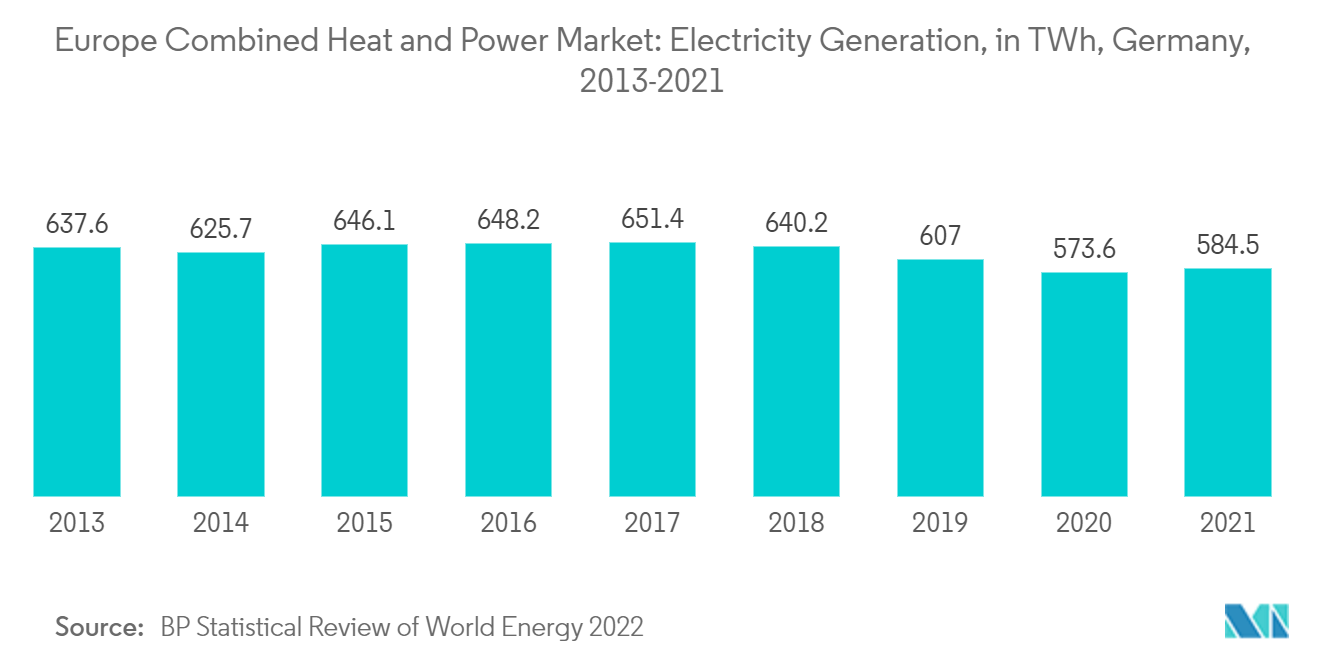
Europe Combined Heat and Power Industry Overview
Europe's combined heat and power market is moderately fragmented in nature. Some of the major players in the market (in no particular order) include 2G Energy AG, General Electric Company, Siemens AG, Mitsubishi Hitachi Power Systems Europe Ltd, and Engie SA.
Europe Combined Heat and Power Market Leaders
-
General Electric Company
-
Siemens AG
-
Mitsubishi Hitachi Power Systems Europe, Ltd.
-
Engie SA
-
UPM
*Disclaimer: Major Players sorted in no particular order
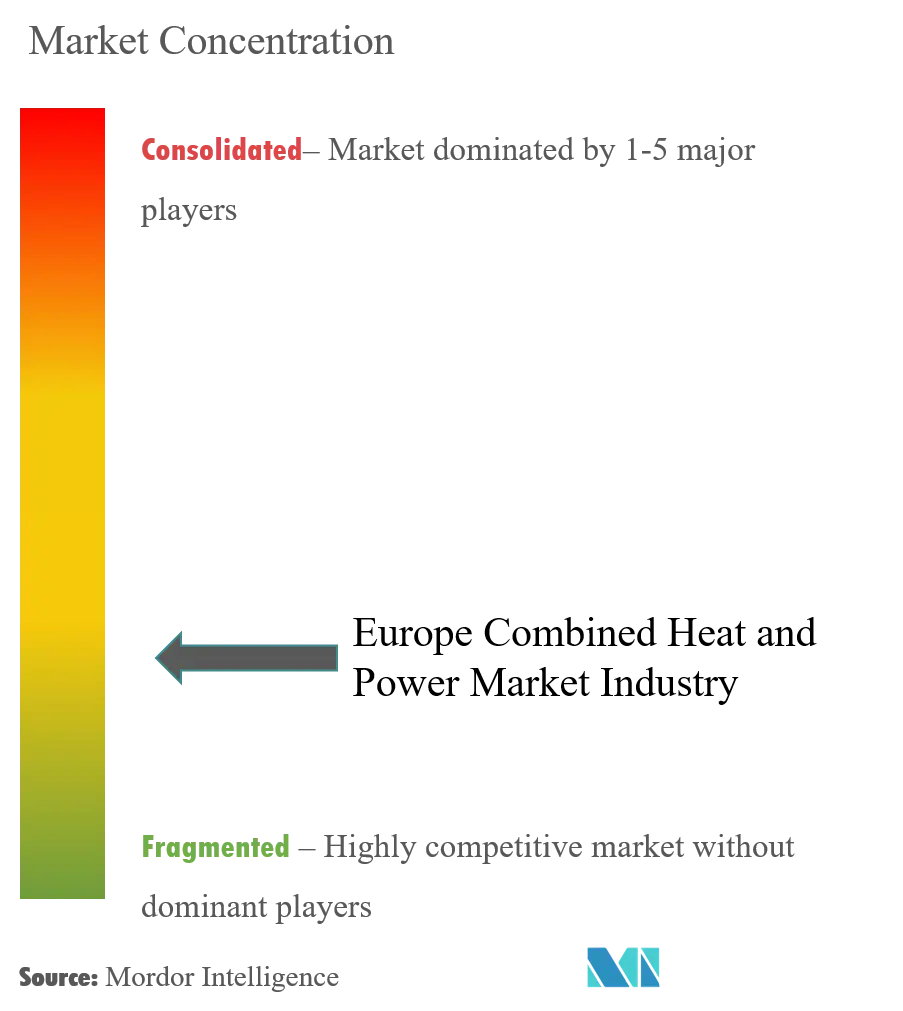
Europe Combined Heat and Power Market News
- In November 2022, UPM, a leading renewable energy solution company, designed an 84 MW gas-fired CHP plant in Germany. The plant aims to facilitate electricity to its Nordland Papier mill and strives to curtail the carbon emissions of the mill by 300,000 ton/year.
- In June 2022, Bio-FlexGen, an EU research project, announced its plan to construct a combined heat and power plant (CHP) system. The CHP plant aims to provide hourly, daily, and seasonal flexibility through hydrogen production from biomass. For everyday flexibility, the plant will use biomass feedstock to power consumption needs within two hours. While for seasonal flexibility, the plant will generate power and heat when the heat demand and electricity prices are high, producing hydrogen and syngas in summer.
Europe Combined Heat and Power Market Report - Table of Contents
1. INTRODUCTION
- 1.1 Scope of the Study
- 1.2 Market Definition
- 1.3 Study Assumptions
2. RESEARCH METHODOLOGY
3. EXECUTIVE SUMMARY
4. MARKET OVERVIEW
- 4.1 Introduction
- 4.2 Market Size and Demand Forecast in USD billion, till 2027
- 4.3 Recent Trends and Developments
- 4.4 Government Policies and Regulations
-
4.5 Market Dynamics
- 4.5.1 Drivers
- 4.5.2 Restraints
- 4.6 Supply Chain Analysis
-
4.7 Porter's Five Forces Analysis
- 4.7.1 Bargaining Power of Suppliers
- 4.7.2 Bargaining Power of Consumers
- 4.7.3 Threat of New Entrants
- 4.7.4 Threat of Substitute Products and Services
- 4.7.5 Degree of Competition
5. MARKET SEGMENTATION AND ANALYSIS
-
5.1 Applicaton
- 5.1.1 Residential
- 5.1.2 Commercial
- 5.1.3 Industrial and Utility
-
5.2 Fuel Type
- 5.2.1 Natural Gas
- 5.2.2 Renewable
- 5.2.3 Biomass
- 5.2.4 Coal
- 5.2.5 Other Fuel Types
-
5.3 Geography
- 5.3.1 Germany
- 5.3.2 United Kingdom
- 5.3.3 Netherlands
- 5.3.4 Rest of Europe
6. COMPETITIVE LANDSCAPE
- 6.1 Mergers and Acquisitions, Joint Ventures, Collaborations, and Agreements
- 6.2 Strategies Adopted by Leading Players
- 6.3 Company Profiles
- *List Not Exhaustive
-
6.4 Engie SA
- 6.4.1 General Electric Company
- 6.4.2 Siemens AG
- 6.4.3 Mitsubishi Hitachi Power Systems Europe Ltd
- 6.4.4 UPM
- 6.4.5 2G Energy AG
- 6.4.6 Wartsila
- 6.4.7 Fleetsolve
- 6.4.8 Vatenfall
7. MARKET OPPORTUNITIES AND FUTURE TRENDS
** Subject To AvailablityEurope Combined Heat and Power Industry Segmentation
Combined heat and power (CHP) is a method to generate power by capturing heat produced through the generation process to provide thermal energy, e.g., steam or hot water. It is also known as a co-generation technology. CHP-generated energy is used for applications such as heating and cooling for domestic and industrial activities. CHP technique is regarded as eco-friendly compared to coal-fired power plants s ait uses sustainable energy sources such as biomass, natural gas, and residual waste.
The European combined heat and power market is segmented by application, fuel type, and geography. By application, the market is segmented into residential, commercial, industrial, and utility. By fuel type, the market is segmented as natural gas, coal, renewable, biomass, and other fuel types. The report also covers the market size and forecast for the European combined heat and power market. For each segment, the market sizing and forecasts have been done on revenue (USD billion).
| Applicaton | Residential |
| Commercial | |
| Industrial and Utility | |
| Fuel Type | Natural Gas |
| Renewable | |
| Biomass | |
| Coal | |
| Other Fuel Types | |
| Geography | Germany |
| United Kingdom | |
| Netherlands | |
| Rest of Europe |
Europe Combined Heat and Power Market Research FAQs
What is the current Europe Combined Heat and Power Market size?
The Europe Combined Heat and Power Market is projected to register a CAGR of greater than 8% during the forecast period (2024-2029)
Who are the key players in Europe Combined Heat and Power Market?
General Electric Company , Siemens AG , Mitsubishi Hitachi Power Systems Europe, Ltd. , Engie SA and UPM are the major companies operating in the Europe Combined Heat and Power Market.
What years does this Europe Combined Heat and Power Market cover?
The report covers the Europe Combined Heat and Power Market historical market size for years: 2021, 2022 and 2023. The report also forecasts the Europe Combined Heat and Power Market size for years: 2024, 2025, 2026, 2027, 2028 and 2029.
Europe Combined Heat and Power Industry Report
Statistics for the 2024 Europe Combined Heat and Power market share, size and revenue growth rate, created by Mordor Intelligence™ Industry Reports. Europe Combined Heat and Power analysis includes a market forecast outlook 2029 and historical overview. Get a sample of this industry analysis as a free report PDF download.



